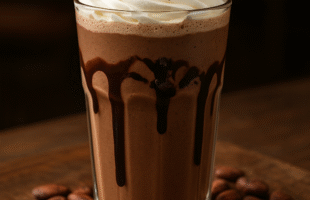
Courtesy of SABIC
By Cath Isabedra
As the world’s population surges past 7.8 billion, our reliance on the ocean’s bounty for sustenance is growing exponentially. Seafood, with its nutritional richness, forms a significant portion of the human diet, particularly in coastal communities worldwide.
However, with the increasing demand for seafood, several challenges have surfaced. These primarily revolve around the packaging of seafood, the rising menace of ocean-bound plastic, and concerns related to aquaculture’s sustainability and environmental footprint.
The Ocean-Bound Plastic Problem
Each year, millions of tons of plastic waste end up in our oceans, becoming a growing environmental catastrophe. This waste originates from diverse sources, including household litter, poorly managed landfills, and industrial waste.
Recent studies estimate that nearly 380 million tons of plastic enter the world’s oceans each year, making them the largest dumpsites for plastic waste.
This plastic debris seriously threatens marine organisms through ingestion, entanglement, and habitat disruption. Microplastics, tiny fragments of degraded plastic, also infiltrate the food chain, potentially impacting human health as we consume seafood.
Innovations and Initiatives in Seafood Packaging
Thankfully, a wave of innovation is driving the emergence of sustainable packaging solutions. These include biodegradable materials, edible packaging, and circular packaging systems that prioritize reusing and recycling.
Companies like SABIC are spearheading these changes, offering packaging solutions directed at reducing the impact of packaging on ocean waste.
SABIC introduced its first ocean-bound plastic solution in 2021 as an additional offering within their existing TRUCIRCLE™ portfolio of circular solutions. Their OBP solutions can be certified circular polymers from advanced recycling of used plastics (used in packaging solutions) or mechanically recycled products from post-consumer recyclate (used in other applications such as consumer electronics).
The OBP-based solution feedstock is certified under the Zero Plastic Oceans program. Their collaborator, HHI (Heng Hiap Industries), was the first organization to have received certification confirming that the OBP materials it recycles qualify as ocean-bound.
These innovative packaging solutions can help reduce the amount of plastic waste entering our oceans, alleviating the pressure on marine ecosystems and aquaculture operations.
At SABIC, innovation is the way to a more sustainable future. Their commitment to innovation drives their development of more sustainable products, operations, and business models. Their OBP innovation is made from post-consumer plastic recovered from areas around ocean-feeding rivers and waterways.”
“Through their collaborations, SABIC works to prevent valuable plastic from becoming waste and entering our natural environment.”
SABIC’s OBP solutions specifically contribute to the following:
- UN Sustainable Development Goal 12: Ensure sustainable consumption and production patterns, namely Target 12.5, by helping to reduce waste generation through the recovery and recycling of post-consumer plastic.
- UN Sustainable Development Goal 14: Conserve and sustainably use the oceans, seas, and marine resources for sustainable development, namely Target: 14.1, by collecting ocean-bound plastic and removing it from the environment, helping to avert marine pollution.
In terms of safety and sustainability, SABIC’s certified circular polymers from advanced recycling of used plastics (including OBP) used in food applications such as Pescanova/Polivouga and Scientex are drop-in solutions with the same packaging characteristics and conditions as the equivalent polymers made using fossil feedstock. Therefore, no investment in line modifications is required, allowing shortened qualification rounds and easy upscaling for packaging converters.
Seafood Packaging: A Potential Ally in the Fight Against Ocean-Bound Plastic
Sustainable aquaculture, which promotes environmental, economic, and social balance, can be an effective tool in the fight against ocean-bound plastic. Minimizing waste production and promoting responsible disposal methods can help reduce marine pollution.
Successful examples of sustainable aquaculture are found worldwide. In Norway, for instance, integrated multi-trophic aquaculture systems are used, which recycle waste products within the ecosystem, reducing the environmental impact.
Better packaging practices, combined with sustainable aquaculture, can support our oceans’ health and the continued provision of seafood, an essential food source for billions of people.
Echoing the Calls for Sustainability
Governments and regulatory bodies can enforce laws and standards promoting sustainable packaging practices, encouraging businesses to switch to eco-friendly alternatives.
Businesses and consumers can drive change by choosing environmentally friendly packaging options and supporting sustainable seafood products.
Tackling the interconnected issues of seafood packaging, ocean-bound plastic, and aquaculture requires global cooperation and a commitment to change at all levels, from international policy-making to individual consumption habits.
As we stand at the intersection of increasing seafood demand and escalating environmental concerns, it is critical to promote innovations in seafood packaging and sustainable aquaculture practices.
SABIC works closely with our customers to offer more sustainable and circular solutions to meet the growing demands of the customer for more sustainable packaging. SABIC also includes the subject of plastics circularity as part of our global Corporate Social Responsibility program, which amongst other objectives, aims to educate about the responsible consumption and end-of-life management of used plastics.
For example, SABIC participates in global activities as part of the CLEAN4Change program organized by the Alliance to End Plastic Waste, an industry-founded and funded non-governmental and non-profit organization of which SABIC is a founding member.
It is a call to action for businesses, policymakers, and consumers alike, reminding us that the health of our oceans, the well-being of our seafood, and, ultimately, our health are inextricably linked. Through collective effort, we can ensure a sustainable future for our planet and ourselves.
This story first appeared in our issue, The Blue Revolution: Merging Technology and Sustainability in Aquaculture.









